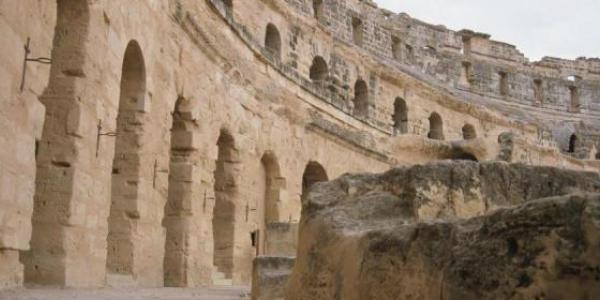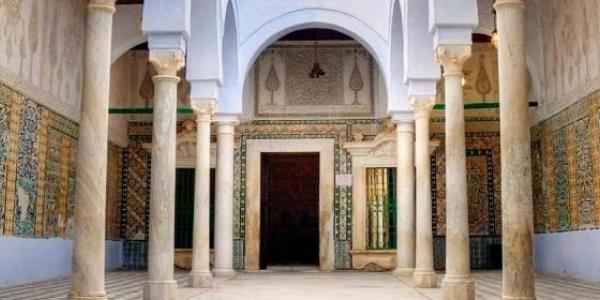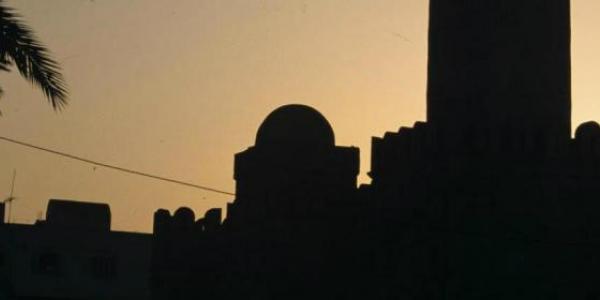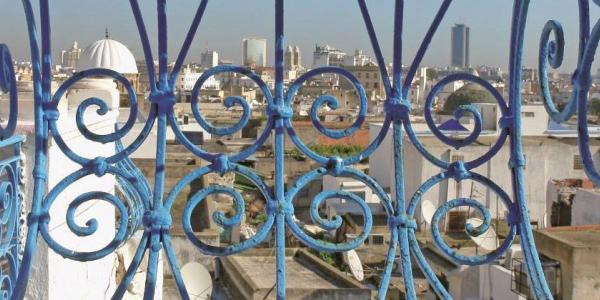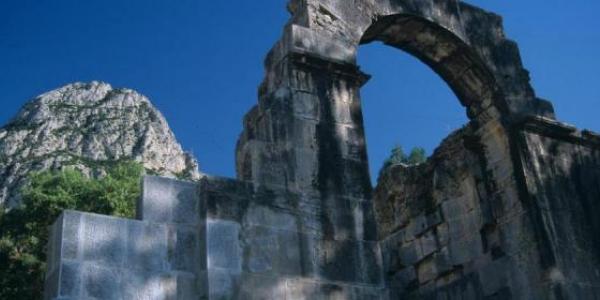The Medina of Tunis

Classified by UNESCO on the list of the world heritage sites, the old city or Medina of Tunis extends westwards of the modern city, as an extension of the broad Bourguiba Avenue and the Avenue de France. There are more than 700 historical buildings along them.
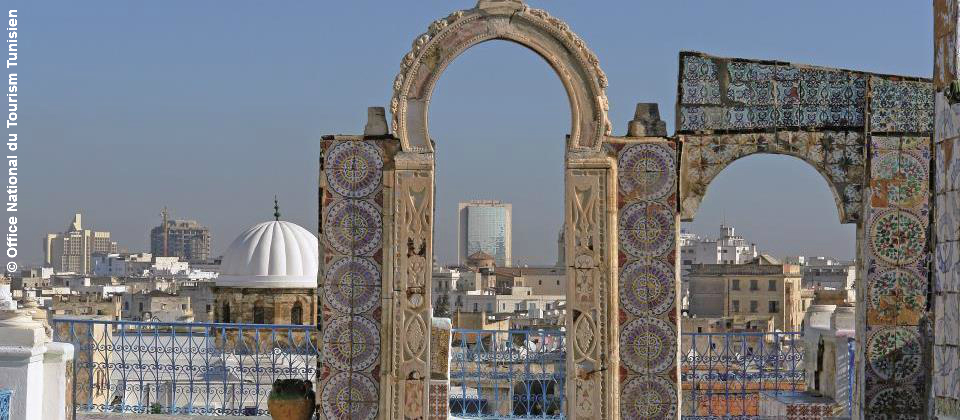
In contrast to the large open spaces of the modern city, the Medina is like a closed world, teeming and fascinating, which seems, at first glance, formed of inextricable labyrinths.

The Medina has many masterpieces of Islamic architecture, such as mosques (Jamaa), Palaces (Dar), Koranic schools (Madrasahs), mausoleum (Turba)... It has several access points, the most obvious of which is at the end of the Avenue de France, from the Victory Square, occupied in its centre by the Sea Gate (Bab Bhar).
The Grand Mosque of Zitouna
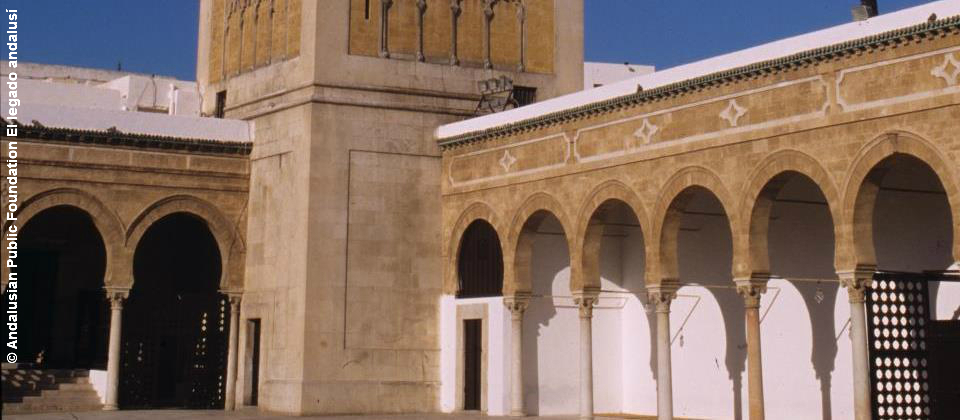
It was founded in 732 AD by the Umayyad governor residing in Tunis, Abd Allah Ibn al-Habab. Presumably it was erected on the ruins of a pre-existing Christian basilica from Byzantine times. The Great Mosque of Zitouna (“olive tree” in Arabic) was rebuilt several times, especially during the reign of the Aghlabid Emir Ibrahim ibn Ahmad (856-863). It is located in the heart of the medina. The prayer room, counting 184 columns, is topped by a Zirid style cupola (9th century), supported by a drum where the niches and stones offer a beautiful harmony of colours. The library was created in the 15th century, and in the following century, the eastern façade was decorated with a colonnaded gallery. In the 17th century, the Turks built the colonnade of the courtyard and in 1834 the 44-meter high minaret of Hispano-Moorish style was erected.
Originally, the Zitouna Mosque was both a religious and political center of Tunis. Then it was devoted solely to religion, becoming a great seat of influence of Islam, teaching Islamic law and theology. Today, it continues its religious education and gathers believers for ritual prayers.
The Souks
All around the Grand Mosque a network of covered streets lined with shops and trades ordered by speciality can be found. Most of them were built in the 12th century.
North of the Zitouna Mosque is Souk El Attarine, known for its essences and perfumes and then we find Souk Ech-Chaouachya (Fez manufacturers). Adjacent to El Attarine there are two other souks: Souk El Kmach, which is noted for its fabrics, and Souk El Birka, which houses embroiderers and jewellers. Among the other souks, we find Souk El Leffa, selling all kinds of carpets, blankets and other weavings; Souk Es-Sarragine, specializing in leather; Souk En Nhas (copper), Es Sabbaghine (dyeing) and Souk El Grana for all kinds of clothing and blankets and which was occupied by Jewish merchants.
Hammouda Pasha Mosque
This Hanefite mosque was founded by Hammouda Pasha in 1655. It is characterized by its elegance and originality, reflected by its symmetry, archways and a superb octagonal minaret.
Youssef Dey Mosque or Sidi Youssef Mosque
It was built by the sovereign Youssef Dey in 1616, and is considered as a model of specific richness in style and perspective. As the one of the Hammouda Pasha Mosque, its minaret has an octagonal shape.
The Gates of Tunis
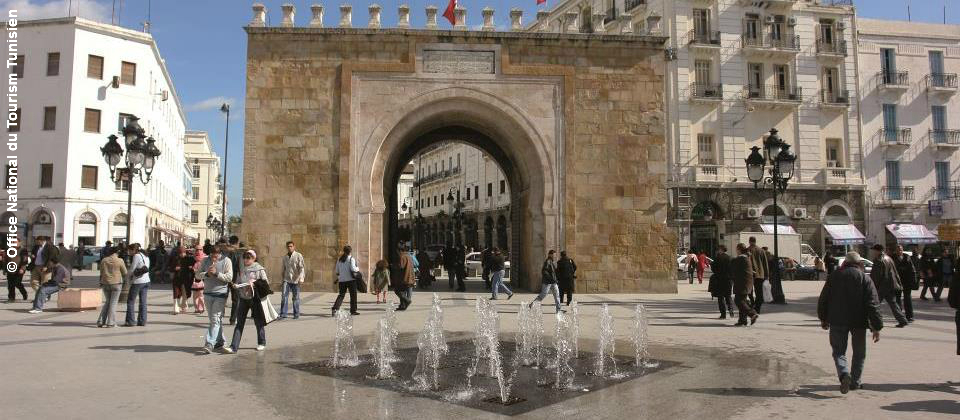
There were eight gates used to close the city during the night. Most of them still survive to our day: Bab Bhar (the Sea Gate), Bab Carthagene, Bab Souika, Bab El Khadhra, Bab Saadoun, Bab Jedid and Bab Alioua. These Gates defined the borders of different neighbourhoods where the different social classes and ethnic groups resided.
The Popular Arts and Traditions Museum of Dar Ben Abdallah
Seated in the southern section of the Medina, Dar Ben Abdallah is the site of the Popular Arts and Traditions Museum where everyday life of 19th century Tunis is reenacted. An exhibit about the 19th-century Tunis bourgeois families can be found in the four rooms around the patio. Their domestic life is depicted through diverse items of that period, such as dresses, embroidery, weaving, wedding accessories, and fineries. Even children's toys and clothes are displayed in one of the rooms.
Tourbet El Bey
It is a mausoleum that houses the tombs of the Husseinite Beys from the 18th to the 20th centuries. It is a large building complex with multiple courtyards and magnificent rooms that guard the tombs of Husseini family rulers, as well as other family members, viziers... This kind of buildings was introduced in Tunisia by the Turks. It was erected during the rule of Ali Bey (1758-1781).
Dar Othman
It is one of the oldest and most sumptuous palaces in the medina of Tunis. Built by the Bey Othman, who resided there from 1594 until he died in 1610, it is characterized by an imposing façade made of black and white marble, in Hafsid style and an inner decoration with polychromic ceramic and fine coffered ceilings.
Dar Hussein
Built in the middle of the 18th century, this residence is distinguished by an architecture marked by Andalusi, Turkish and Italian influence. It houses the Institute of National Patrimony headquarters today.
The Municipal Theatre
This imposing building on Avenue Bourguiba was built after the Art Nouveau style in 1902. It is the most important site for the organization of cultural events throughout the year.
The modern city shows many buildings that represent the different cultures that have settled in the city. So, we can observe the Grand Cathedral (or Saint Vincent de Paul Cathedral), which was built in 1882, one year after the French Protectorate. It is located on the main street, Habib Bourguiba Avenue, facing the statue of Ibn Khaldun (1332-1406), one of the greatest medieval Arab historians, born in Tunis in a family of Andalusian emigrants. The modern city also hosts the Greek Orthodox Church, the Russian Protestant Church, the Grand Synagogue and the Numismatics museum.



